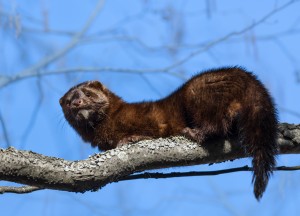 The Everglades is home to the Everglades Mink, hence the name! This small member of the weasel family is one of three types of minks found in Florida. The Everglades Mink happens to be the only one that lives in south Florida. They are semi-aquatic, carnivorous and also related to otters, ferrets, badgers, and martens.
The Everglades is home to the Everglades Mink, hence the name! This small member of the weasel family is one of three types of minks found in Florida. The Everglades Mink happens to be the only one that lives in south Florida. They are semi-aquatic, carnivorous and also related to otters, ferrets, badgers, and martens.
An Everglades Mink has chocolate brown fur, a small head and tiny black eyes and ears. Its legs are short, it has a pointed muzzle, five partially webbed toes on each food but it has a long bushy tail. A mink’s feet help them swim easily in water while they search for food. A mink also releases an unpleasant-smelling liquid, similar to a skunks; it does this as a warning and also a marker for other minks to know of its presence. It doesn’t spray this liquid, unlike s skunk, but does release it out of fear. The mix will also squeal, snarl, and hiss if it is frightened. This mink can grow up to 25 inches long.
Like stated before, its home is in the Everglades, also including shallow freshwater marshes and swamps of the Fakahatchee Strand, Big Cypress Swamp.
Despite their small size, Everglade minks are known to grab prey larger than themselves. They are nocturnal and hunt for food on land and in the water; they enjoy eating small mammals, snakes, fish, and insects.
Usually, a mink will be found by itself; unless, it’s a mother raising its young. A female mink can give birth to three to six kits during the spring time. The kits are born hairless, but open their eyes and start growing hair around three weeks. These babies usually stay around the mother until the fall. Females stay close to the den, while male roam twice as far and visit other dens. Dens are usually found in a hollow log, or under tree roots.
The Everglades mink is a threatened special by the Florida Fish and Wildlife Conservation Commission. In recent years, this mink has only been spotted in shallow freshwater marshes and swamps of the Everglades Park.
Spot the Mink
Although it usually comes out at night, there’s a chance you may still see an Everglades mink while exploring the Everglades as it heads home to its den. The best way to see the variety of wildlife and vegetation in the Everglades is a ride through the Everglades on an airboat with Captain Mitch. Airboat tours in Everglades give visitors an up-close-and-personal view of the mink’s habitat. Call Captain Mitch’s Airboat Tours at 239-695-3377 or click here to book a trip today!
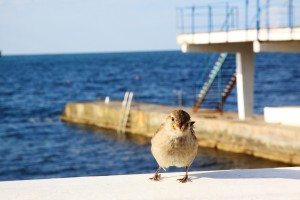 This winter has not been good for many birds in the Everglades, including the Cape Sable seaside sparrow. Its habitat has been threatened by substantial rain and water that was drained from Lake Okeechobee. For the sparrow’s nesting area, water levels were too high. The U.S. Fish and Wildlife Everglades Program knew what would happen once the water was released, but they never anticipated it being as bad as it turned out. Now, officials and biologists are concerned about this bird and its future.
This winter has not been good for many birds in the Everglades, including the Cape Sable seaside sparrow. Its habitat has been threatened by substantial rain and water that was drained from Lake Okeechobee. For the sparrow’s nesting area, water levels were too high. The U.S. Fish and Wildlife Everglades Program knew what would happen once the water was released, but they never anticipated it being as bad as it turned out. Now, officials and biologists are concerned about this bird and its future.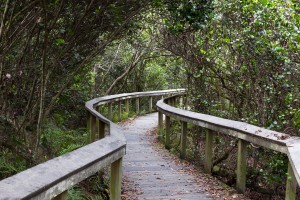 The Everglades is a beautifully mysterious place to visit. So, why not experience it up-close-and-personal? The Everglades National Park allows visitors to explore their surroundings with several hiking and bike trails winding throughout the wetlands.
The Everglades is a beautifully mysterious place to visit. So, why not experience it up-close-and-personal? The Everglades National Park allows visitors to explore their surroundings with several hiking and bike trails winding throughout the wetlands. The beauty, vastness, and mystical nature of the Everglades is something that should be experienced by everyone in real life. Beautiful flowers. Mangrove forests. Endangered creatures. Even if you’re lucky enough to visit this special place, you can’t take it home with you. However, thanks to talented directors, people can bring the Everglades into their home. Several documentaries have been made throughout the years about the Everglades to shed light on environmental issues, showcase the beauty and importance of the area, and profile plant life, wildlife, and marine life within. No matter where someone lives, he or she can have an up-close-and-personal look into he Everglades from the comfort of his or her own living room.
The beauty, vastness, and mystical nature of the Everglades is something that should be experienced by everyone in real life. Beautiful flowers. Mangrove forests. Endangered creatures. Even if you’re lucky enough to visit this special place, you can’t take it home with you. However, thanks to talented directors, people can bring the Everglades into their home. Several documentaries have been made throughout the years about the Everglades to shed light on environmental issues, showcase the beauty and importance of the area, and profile plant life, wildlife, and marine life within. No matter where someone lives, he or she can have an up-close-and-personal look into he Everglades from the comfort of his or her own living room.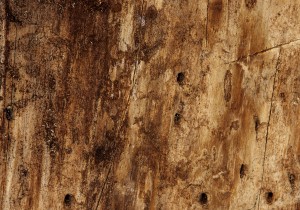 The Everglades is a distressed ecosystem. Usually, climate change, pollution, and human development come to mind when the topic of a hurting wetland comes up. Sadly, the Everglades are currently facing another threat to its future: a fungus. This fungus goes by the name Laurel Wilt, and it is a tree disease that showed up in the Everglades in 2011.
The Everglades is a distressed ecosystem. Usually, climate change, pollution, and human development come to mind when the topic of a hurting wetland comes up. Sadly, the Everglades are currently facing another threat to its future: a fungus. This fungus goes by the name Laurel Wilt, and it is a tree disease that showed up in the Everglades in 2011.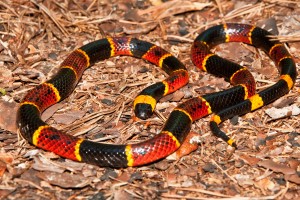 Twenty three snake species live in the Everglades. Of these 23, only four are venomous. Many people have a fear of snakes, and with several being poisonous, it makes sense why people prefer to stay away from these slithering creatures. However, these reptiles are an important part of the ecosystem of the Everglades. They control and prey on the number of rodents, invertebrates and other snakes. These snakes are also a food source for birds and alligators.
Twenty three snake species live in the Everglades. Of these 23, only four are venomous. Many people have a fear of snakes, and with several being poisonous, it makes sense why people prefer to stay away from these slithering creatures. However, these reptiles are an important part of the ecosystem of the Everglades. They control and prey on the number of rodents, invertebrates and other snakes. These snakes are also a food source for birds and alligators.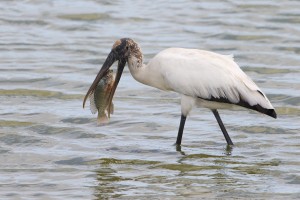 The Everglades needs water to survive; it’s a water-based ecosystem made up of sawgrass marshes, waterways, prairies, forested uplands, and ponds, including Paurotis Pond. One reason the area needs water so badly is because it’s home to an abundance of plants, animals, and marine life. Not only does water give the plants and animals sustenance, it gives them a home.
The Everglades needs water to survive; it’s a water-based ecosystem made up of sawgrass marshes, waterways, prairies, forested uplands, and ponds, including Paurotis Pond. One reason the area needs water so badly is because it’s home to an abundance of plants, animals, and marine life. Not only does water give the plants and animals sustenance, it gives them a home.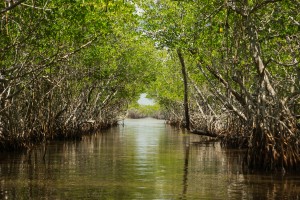 Have you ever seen a mangrove forest? They’re enchanting. Branches and roots all intertwined, lining waterways – they look like something out of a fantasy. Across the entire state of Florida, there are 469,000 acres of mangrove forests.
Have you ever seen a mangrove forest? They’re enchanting. Branches and roots all intertwined, lining waterways – they look like something out of a fantasy. Across the entire state of Florida, there are 469,000 acres of mangrove forests.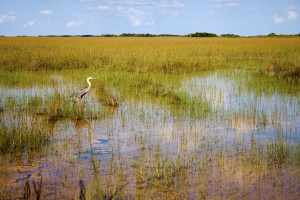 South Florida’s rainfall last month broke records. In fact, the area saw more rainfall than a typical summer during Florida’s wet season. Meteorologists attribute this excessive rain to this year’s intense El Nino weather patterns. El Nino occurs irregularly every two to seven years, and the force of this year’s anomaly threatens Everglades wildlife. And according to the National Oceanic and Atmospheric Administration (NOAA), El Nino isn’t easing off anytime soon. The organization predicts El Nino to last through early spring, which means more complications for the Everglades.
South Florida’s rainfall last month broke records. In fact, the area saw more rainfall than a typical summer during Florida’s wet season. Meteorologists attribute this excessive rain to this year’s intense El Nino weather patterns. El Nino occurs irregularly every two to seven years, and the force of this year’s anomaly threatens Everglades wildlife. And according to the National Oceanic and Atmospheric Administration (NOAA), El Nino isn’t easing off anytime soon. The organization predicts El Nino to last through early spring, which means more complications for the Everglades.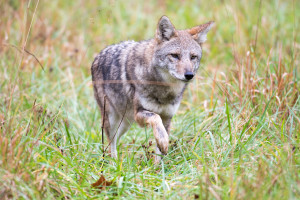 Contrary to popular belief, coyotes are not limited to southwestern states. In fact, coyotes exist throughout the majority of Florida, and the Everglades is no exception. Coyotes are considered a noninvasive species since they found their way to Florida without any human intervention. And the population of coyotes in Florida has steadily increased over the past 15 years. Everglades coyotes are primarily found in marshy habitats otherwise known as marl prairies. These wild dogs share terrain with all sorts of animals from marsh rabbits to armadillos.
Contrary to popular belief, coyotes are not limited to southwestern states. In fact, coyotes exist throughout the majority of Florida, and the Everglades is no exception. Coyotes are considered a noninvasive species since they found their way to Florida without any human intervention. And the population of coyotes in Florida has steadily increased over the past 15 years. Everglades coyotes are primarily found in marshy habitats otherwise known as marl prairies. These wild dogs share terrain with all sorts of animals from marsh rabbits to armadillos.





